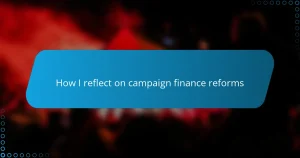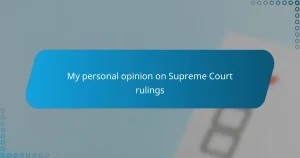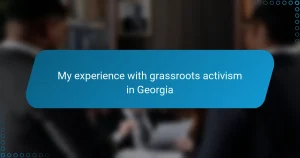Key takeaways
- Policy impact analysis combines data with human experiences, emphasizing the importance of local contexts and real-life consequences.
- The political landscape in Texas is shaped by diverse demographics, with younger, progressive voters challenging traditional norms and practices.
- Effective analysis requires comparing regional outcomes, as policies can have varying effects across different areas of the state.
- Reliable and quality data, including community-generated insights, are crucial for understanding the nuanced impacts of policy changes.
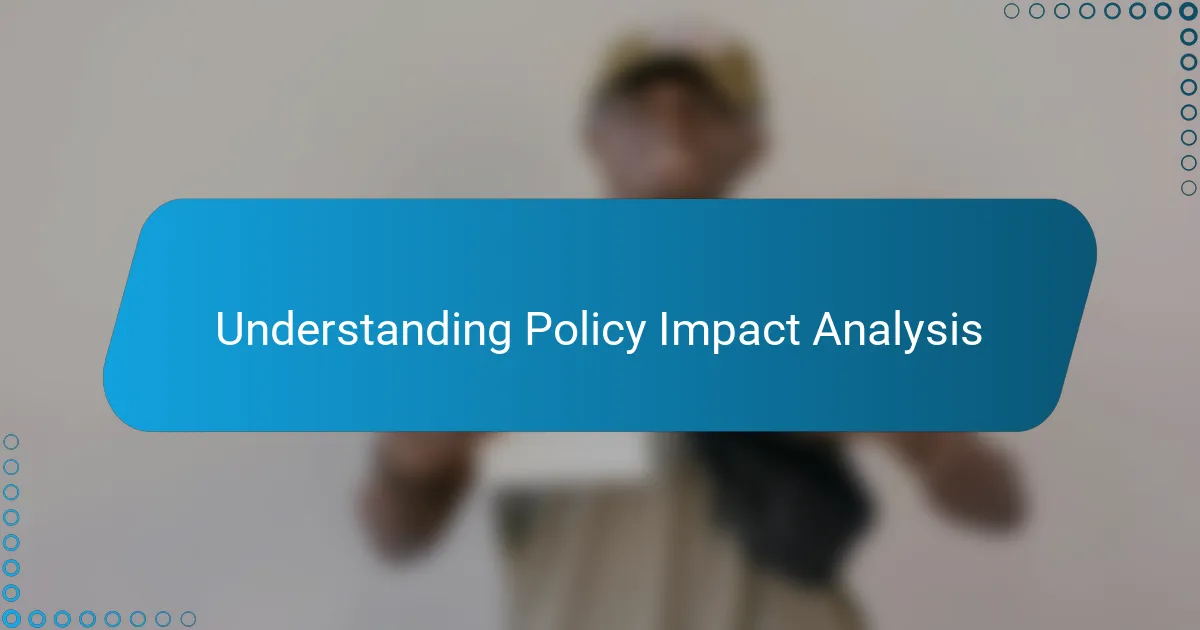
Understanding Policy Impact Analysis
When I first started looking into policy impact analysis, I realized it’s not just about numbers on a page. It’s about understanding real-life consequences—how decisions ripple through communities, economies, and everyday lives. Have you ever wondered if a new law really helps the people it’s meant to serve, or if it just changes paperwork?
What makes policy impact analysis so fascinating to me is its blend of art and science. You gather data, but then you have to interpret it through the lens of local contexts and human stories. It’s like piecing together a puzzle where some pieces are statistics and others are voices you can’t ignore.
I’ve learned that asking the right questions is half the battle: Who benefits? Who might be left behind? And what unintended effects could creep in? That curiosity drives me to dig deeper, because policies aren’t just documents—they’re forces that shape lives in ways we often overlook.
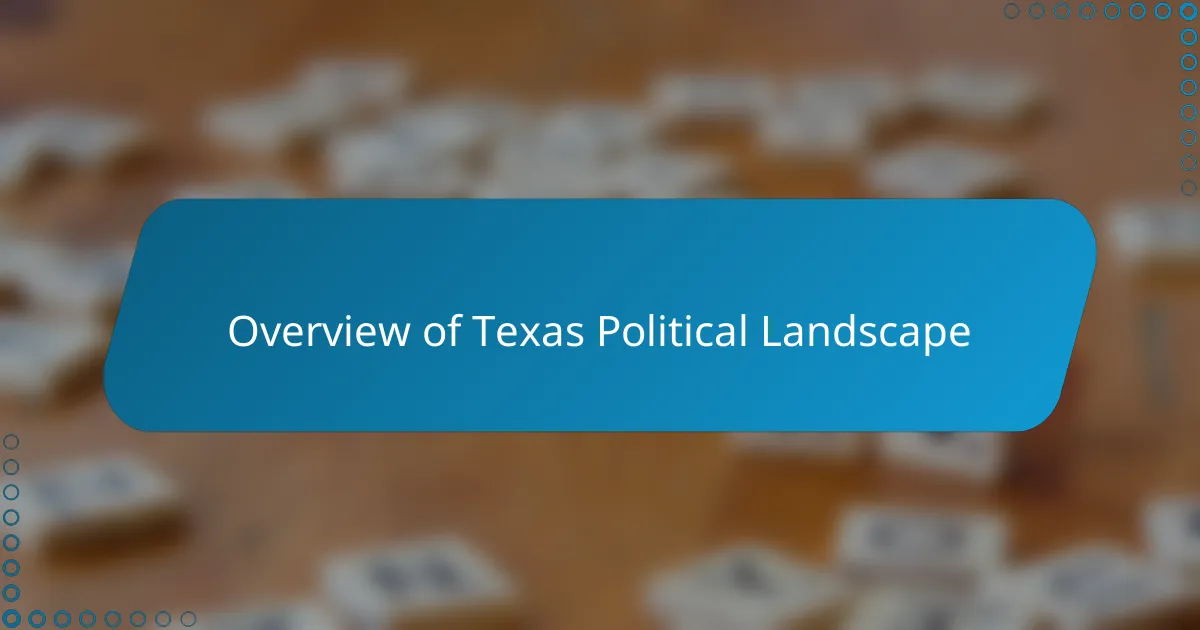
Overview of Texas Political Landscape
Texas politics always struck me as a dynamic battlefield, shaped by its vast size and diverse population. The state blends deep-rooted conservative traditions with pockets of progressive thought, which makes every policy discussion feel like a complex dance between competing visions. Have you noticed how the Lone Star State often sets trends that ripple far beyond its borders?
I recall attending a local town hall where passionate voices from urban Houston clashed with rural voters in East Texas. This mix of perspectives means political shifts here don’t happen in isolation—they reflect broader social and economic currents. Understanding this helps me see why analyzing policy impacts requires more than just data; it demands appreciating these cultural contrasts.
What’s really fascinating is how demographic changes are slowly reshaping Texas politics. Younger, more diverse voters bring new priorities, challenging the status quo in unexpected ways. Observing this evolution firsthand reminds me to keep an open mind and never assume policy impacts remain static over time.
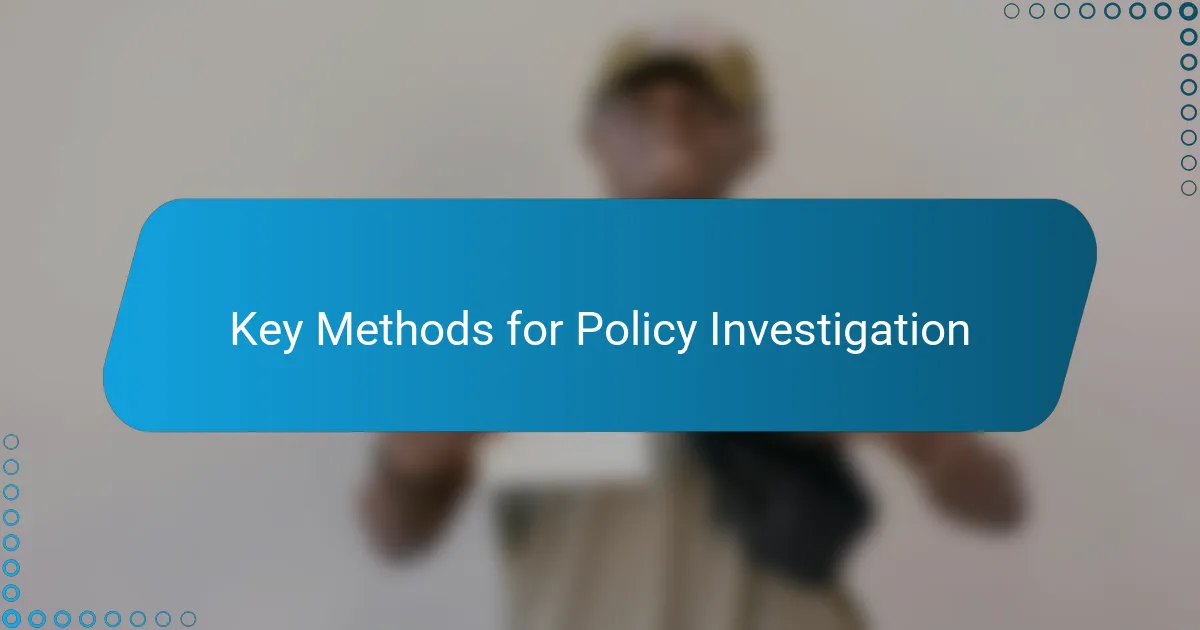
Key Methods for Policy Investigation
One method I rely on is combining quantitative data with qualitative insights. Numbers tell a story, but to truly grasp a policy’s effect, I need to hear from people living it day-to-day. Have you ever sat down with someone after a policy changed and asked, “How has this touched your life?” Those conversations often reveal gaps that stats alone can’t capture.
Another key approach is comparing regions within Texas. With such a diverse state, policies might play out wildly differently from Dallas to El Paso. By mapping trends across counties, I can pinpoint where a policy succeeds or falls short and start asking why. This comparative lens helps uncover patterns that might otherwise stay hidden.
Finally, I keep an eye on unexpected consequences. Policies rarely unfold exactly as planned, so I track indicators that aren’t in the headline goals—things like shifts in small business growth or school attendance rates. I remember following one education reform and noticing dropout rates nudging upward in certain communities. That surprise data pushed me to dig deeper, illustrating how vital it is to look beyond initial expectations.
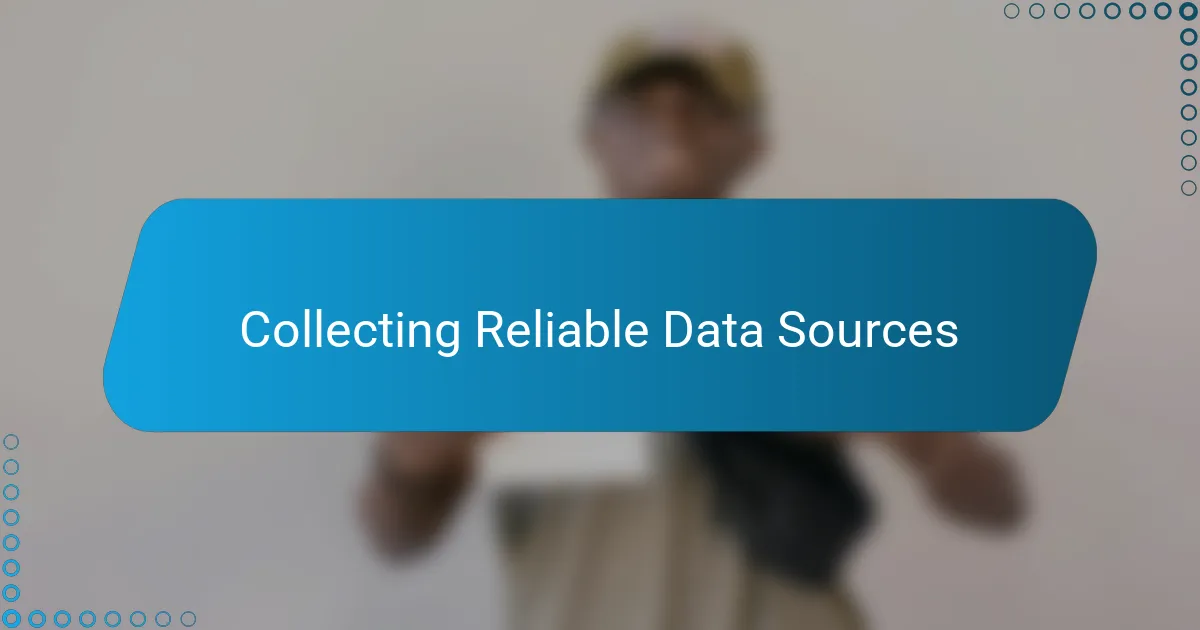
Collecting Reliable Data Sources
Reliable data is the backbone of any meaningful policy investigation. Early on, I learned to be cautious about where my numbers came from—official state databases, local government reports, and respected research institutions became my go-to sources. Have you ever felt frustrated chasing figures that just didn’t add up? That experience taught me the importance of cross-checking data to avoid misleading conclusions.
I also found that tapping into community-generated data adds a rich layer often missing in large datasets. For instance, local surveys or grassroots reports can highlight nuances that broad statistics overlook. When I once partnered with a neighborhood group in San Antonio, their firsthand data revealed gaps in service delivery that statewide reports simply glossed over.
But it’s not just about quantity—quality matters most. I invest time verifying the methodology behind every dataset, asking: How was this information collected? Who funded it? Are there biases hidden in the process? These questions help me sift through noise and focus on findings that truly reflect Texas’s complex realities.
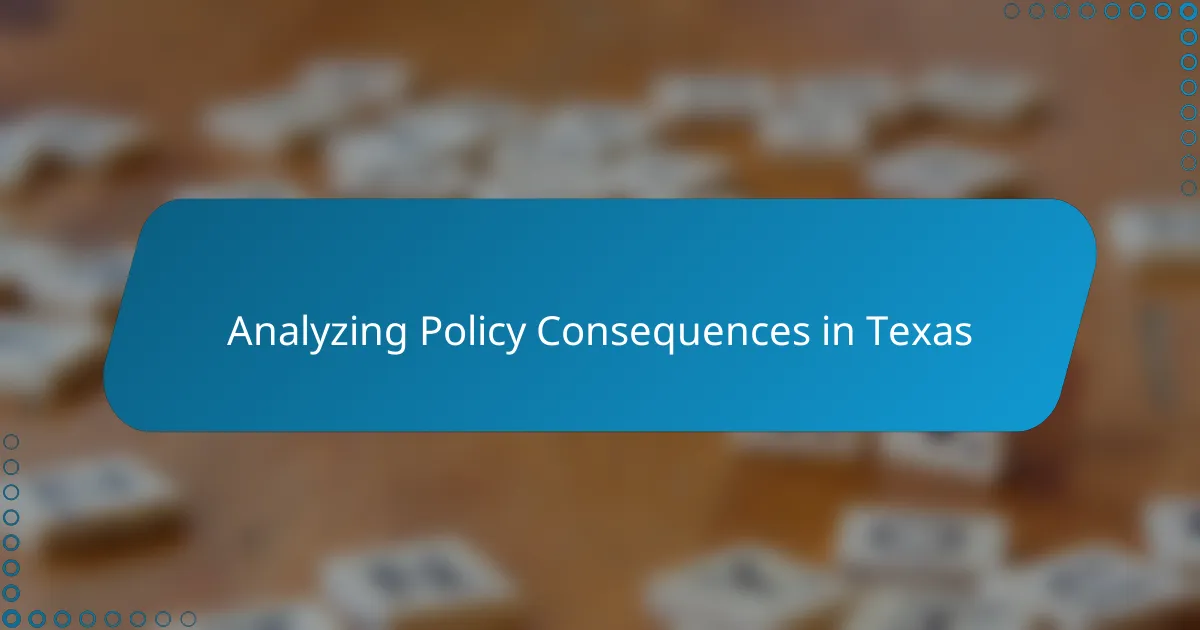
Analyzing Policy Consequences in Texas
Analyzing policy consequences in Texas means looking beyond the obvious. I remember digging into a health care policy, thinking the numbers showed progress, but when I talked to families in rural West Texas, the story was different—the policy created barriers they hadn’t anticipated. It made me realize how crucial it is to connect data with real human experiences.
To me, assessing these outcomes feels like uncovering a hidden narrative. Have you ever noticed how a new law can help urban areas but unintentionally strain resources in smaller communities? Tracking these contrasts within Texas’s vast regions keeps my analysis grounded and honest. It’s where the real impact goes from theory into lived reality.
Sometimes, the consequences surprise me most. I once studied an education reform expecting clear improvements, but instead, dropout rates rose in certain districts. That unexpected shift sparked a series of questions I hadn’t planned to ask, proving that thorough policy analysis is never about assumptions—it’s about always listening for what the data and the people reveal together.
